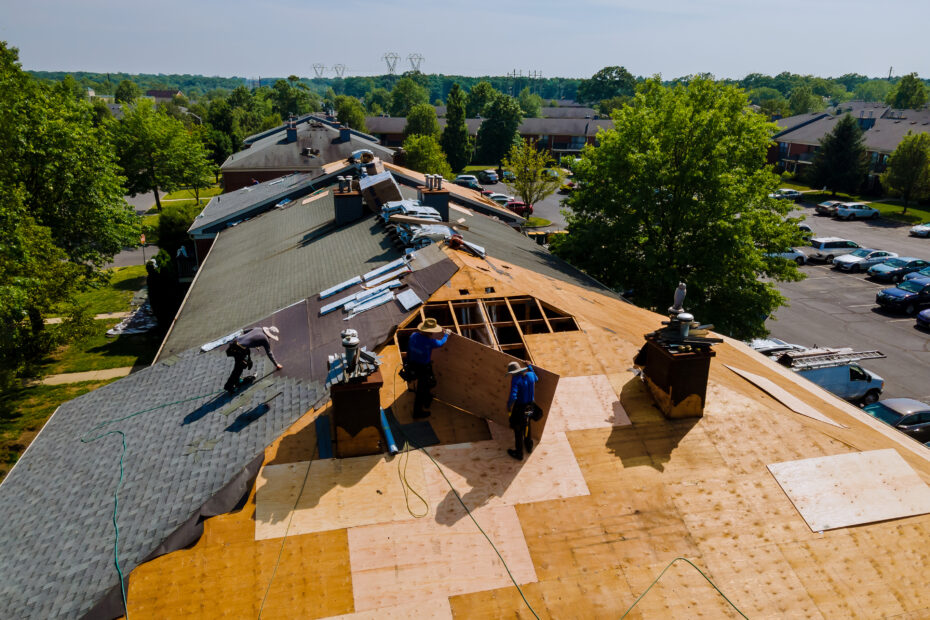Your roof is the most important part of your home. When choosing the roofing material that is right for you, there are many factors to consider: climate conditions, architectural style and taste. There are six common roofing materials: Asphalt shingles (or tiles), clay or concrete, copper, corrugated/long run steel, membrane, and slate.
It’s important to note that this isn’t the only option. If you want something more innovative, perhaps solar tiles are a better choice.
Asphalt shingles
Asphalt shingles were a very popular choice in roofing for many years. The two main types of asphalt roofing shingles are fibreglass and natural. There are two types of organic asphalt shingles: a base that’s made up from cellulose, wood, or wastepaper fibres. Fibreglass roof shingles are made of a fibreglass layer that has been bonded to a urea/formaldehyde adhesive.
Asphalt shingles are available in different colours and designs, which makes them a very attractive option. Fibreglass offers high levels of resistance to fire and is durable. It requires little upkeep. Other options are available for areas with strong winds.
While asphalt tiles can be durable, they will degrade with age and need replacing more often than any other type of roofing. It’s also important to know that some organic tiles from before the 80’s might contain asbestos. This is something you need to look out for if buying an old house. When the tiles get old, their granules will fall off, which can lead to problems with water penetration.
Clay/concrete tiles
Since the first ceramic roofing tiles were made by humans in China over 12,000 years ago, clay is now considered to be one of oldest roof materials. Clay tiles, and then concrete tiles, are not surprising to have gained widespread acceptance. Composite materials are lighter, more durable, and less expensive than steel.
A house that has a tiled roofing is visually appealing. Clay tiles have a high level of durability and are resistant to both fires and insects. In terms of aesthetics, clay tiles come in various colours and finishes. At the end of their lifetime, they are recyclable.
In addition, because tiles weigh more, they require extra supports, increasing construction costs. Tiles can break easily if they are stepped on. This makes repairs more difficult and can make it harder to match the colour of individual tiles.
Copper
Known as the Rolls Royce among metal roofing materials, copper has long been used to cover roofs because it is very durable. It is hard to find a material that can match the natural patina of copper. This makes it the perfect choice for contemporary architectural designs.
Copper, unlike some roofing material, will never rust. Copper roofing is a highly recyclable material.
It is important to note that because copper is such a soft material, it’s susceptible to being dented easily by hail, and other impacts. Copper has also been known to be susceptible to temperature variations and to have a tendency of expanding and contracting.
Long run steel & corrugated steel
Corrugated Iron is not a term that is used anymore, since it is made out of steel. Although its durability is well known, technological advancements have brought about a wide variety of finishes and styles.
Steel is easy to install, offers a high performance-to-weight ratio, suits just about every architectural style, is recyclable at the end of its life cycle and can easily stand up to our changeable weather.
A downside to steel roofing is its tendency to dent when it’s hit too hard. It can ruin the appearance of your roof and even cause leaks at seams. If installed improperly, your roof will likely have issues with leaks and water entry.
Membrane
Membrane products used to be the exclusive domain of the commercial market. They have now gained popularity on the home front, where they work well for low-pitched or flat roofs. The four types of roofing membranes are thermoset, polymer, modified-bitumen, and glass-reinforced-plastic.
Depending on the type of membrane roofing you choose, there are various benefits but generally they all offer good performance-to-weight ratios, are easy to install by specialised contractors and offer high levels of aesthetics.
In the negative, it has been reported that some thermosets and thermoplastics can cause water pools or allow ingress of water if improperly installed or poorly maintained. These thermoset and thermoplastic products can also suffer from punctures. This is why you should take care when inspecting your roof or performing repairs.
Slate roof tiles
Few materials can match slate for making a statement on your roof. Slate shingles roofs are also a good way to increase your property’s resale. This is because slate’s tonal variation makes it very appealing and can go with any architectural style.
There is no better option for longevity than slate. Old buildings throughout Europe are still covered in their original slate roofing. It is easy to maintain slate shingles and you can reuse or recycle them multiple times.
In contrast, slate shingles will require proper structural support. You should only hire an expert slate roofing contractor to install your slate shingles. As slate shingles may break when walked on, care should be taken during repairs and maintenance.
